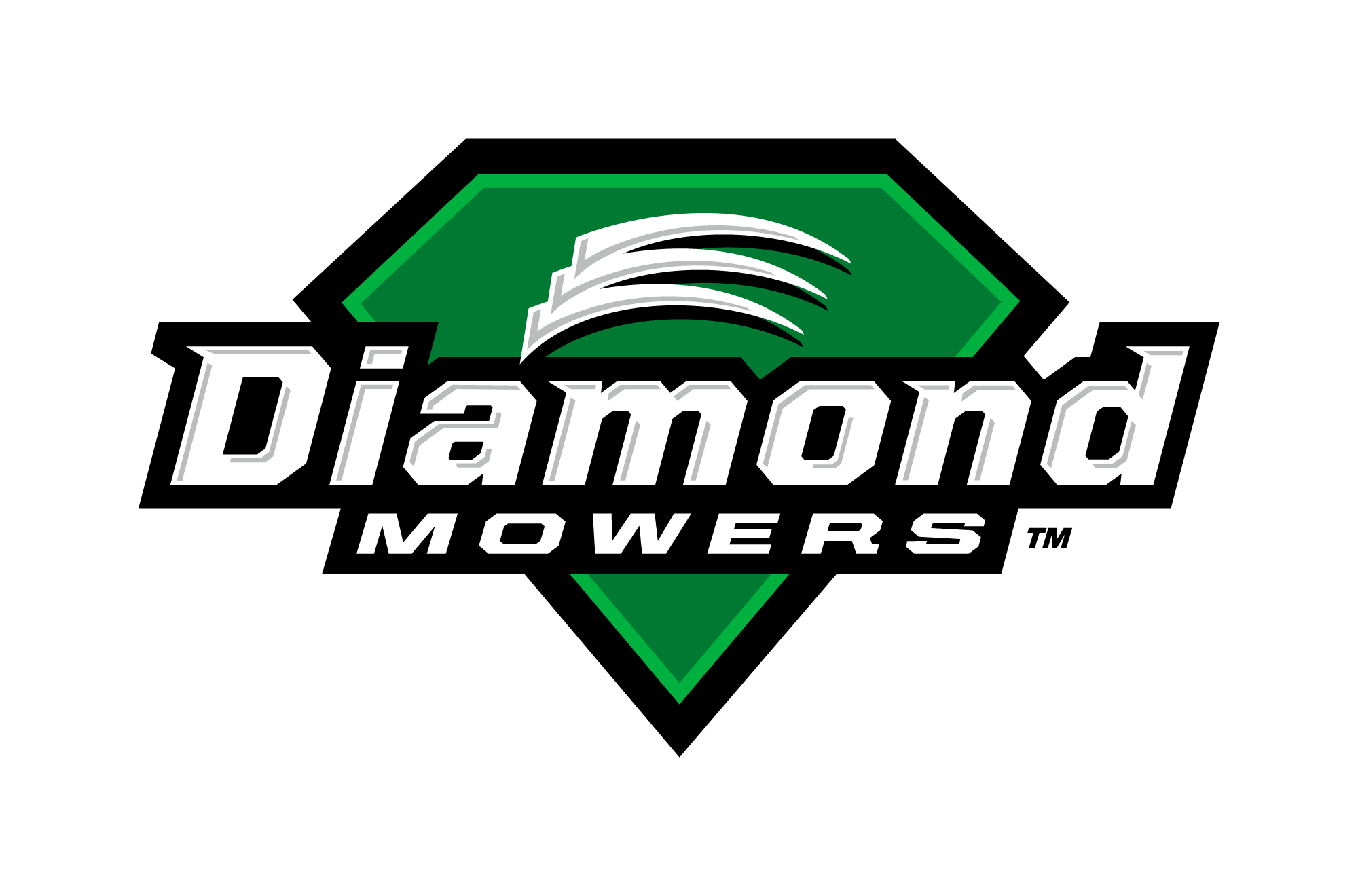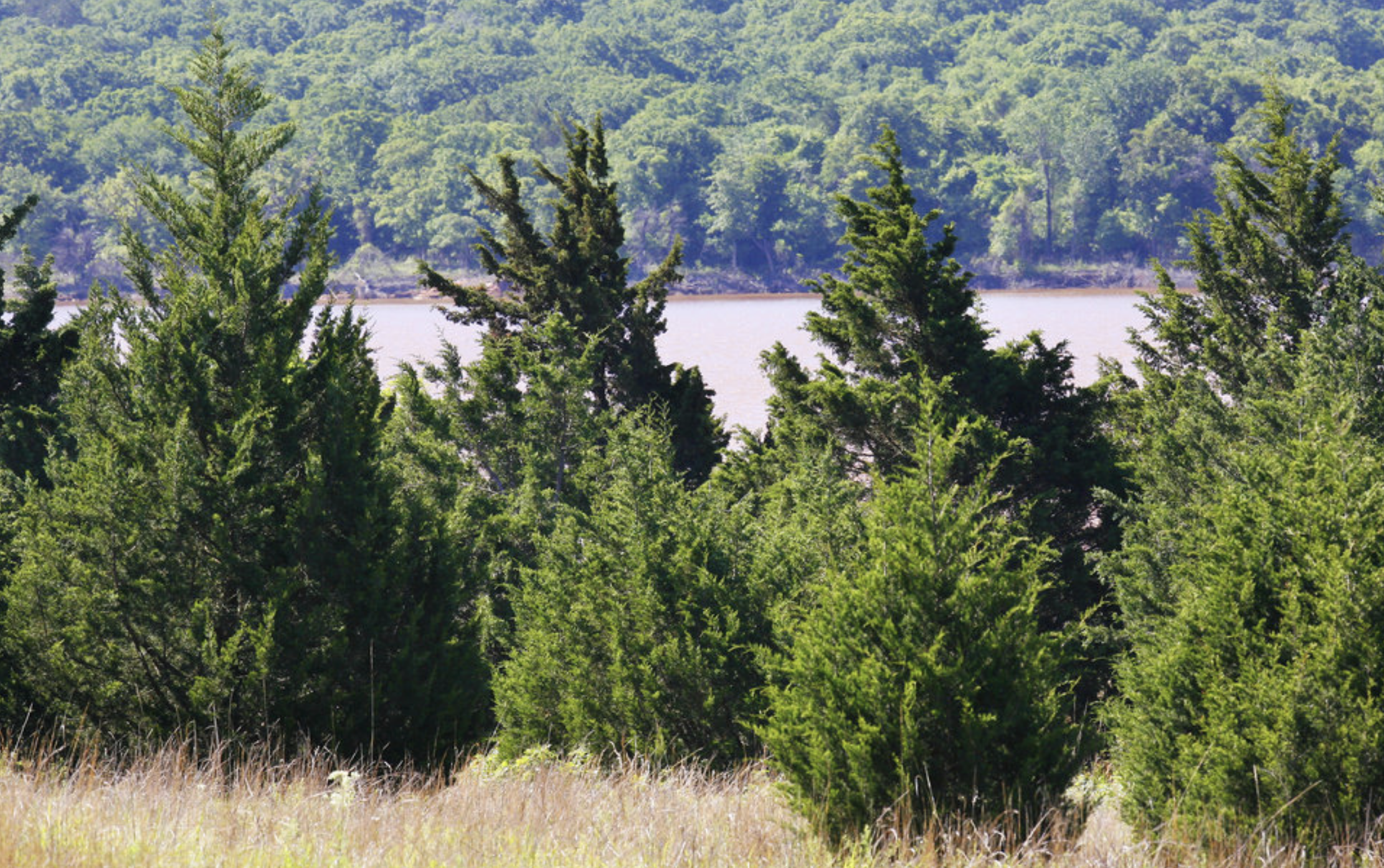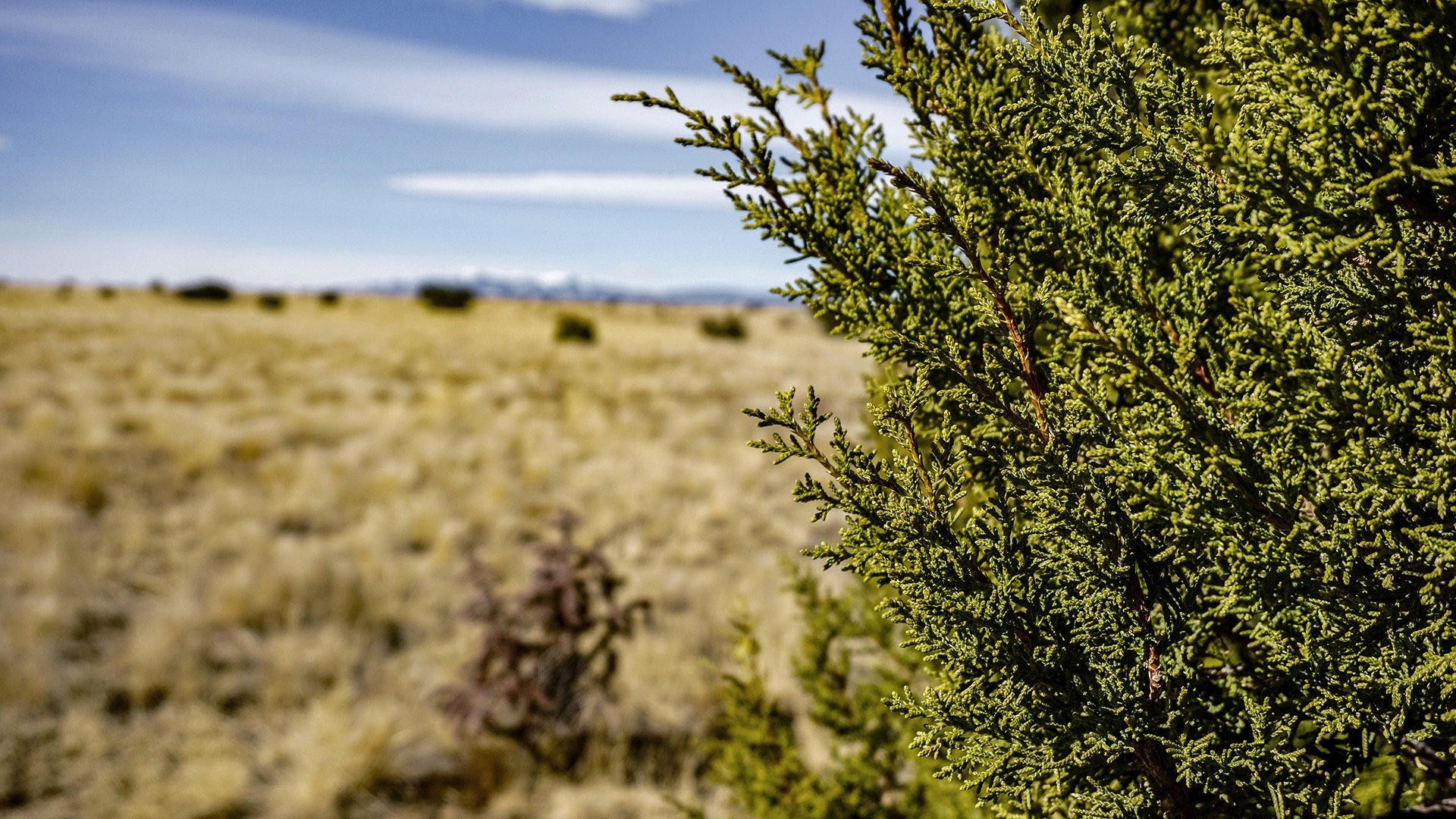
In Oklahoma, Texas, and Kansas, the eastern red-cedar (Juniperus virginiana L.) has substantially reduced livestock production and profitability by 75% in the rangelands it invades.
Originally limited to rocky bluffs and other areas where fire couldn't reach them, eastern red-cedar tree populations expanded with the introduction of European land management practices to the United States. A decrease in controlled burns allowed forests to spread, including this now-invasive species. It extended from its native Kansas to nearby states, where it overtakes prairie plant life.
If your property has eastern red-cedar, you might know about this tree's tenacity all too well. It can grow year-round in temperatures above 40 degrees Fahrenheit and in a variety of precipitation conditions. As a result, these trees take the resources that native grasses need to live, killing off valuable grazing land. Fortunately, you have a variety of options for removing this invasive tree from your property.
How to Identify an Eastern Red-Cedar Tree
The eastern red-cedar is column-like or cone shape and usually measures 30 to 40 feet in height. You can assess if your land has eastern red-cedar by looking for these traits:
- Dark green to blue-green foliage: Red-cedar trees can have one of two leaf shapes — scale-like and dull-pointed, or scaleawe-like and pointing away from the twig. Their twigs have a square shape and tiny buds.
- Reddish-brown bark and wood: Both the bark and wood from a red-cedar tree have a distinct reddish-brown color. An eastern red-cedar's bark is thin and peels off in long, shred-like strips. Red-cedars have moderately soft wood.
- Cone-shaped fruit: While we call the Juniperus virginiana L. the eastern red-cedar, it actually falls under the Juniper genus because it has a fleshy, berry-like fruit instead of a woody one. Many birds use this fruit as a food source and spread the seeds throughout their habitats.
Photo Credit: Gatehouse Media, LLC. - The Oklahoman
Types of Destruction Caused by
Red-Cedar
Eastern red-cedar trees damage the surrounding grasslands by:
- Intercepting rainfall: The dense canopies created by red-cedar trees prevent precipitation from reaching the grass below. Studies estimate the eastern red-cedar can block anywhere from 25% to 60% of bulk rainfall in an area. These numbers vary based on the grass species involved.
- Consuming large amounts of water: Eastern red-cedar trees have a long-standing reputation as water guzzlers. Research suggests they drink 24 liters (~6 gallons) of water per day, but the largest red-cedars can consume as much as 50 to 60 liters (~13 to 16 gallons). These high consumption levels take away water that native grasses need to stay alive.
- Fueling wildfires: Many features of the eastern red-cedar make it vulnerable to wildfires. Its flammable foliage and thin bark catch fire easily. The red-cedar also contains a variety of oils that make it quick to ignite. Cone-shaped red-cedars increase their fire risk by keeping more of their foliage close to the ground. A burning red-cedar tree can spread thousands of embers downwind, increasing the rate of a wildfire's spread.
Eastern Red-Cedar Trees as an Invasive Species in the Green Glacier
In the central states and Great Plains, range specialists have noticed the increasingly harmful effects of cedar and juniper trees. Their rapid spread on rangelands is known as the "Green Glacier" by some academics. Two major forces in the Green Glacier include the Rocky Mountain juniper (Juniperus scopulorum) and the eastern red-cedar. Invasive junipers and cedars have a similar negative impact on rangelands as eastern red-cedars, limiting available grasslands for grazing. By controlling the eastern red-cedar and the Green Glacier, you can keep grass alive for your livestock.
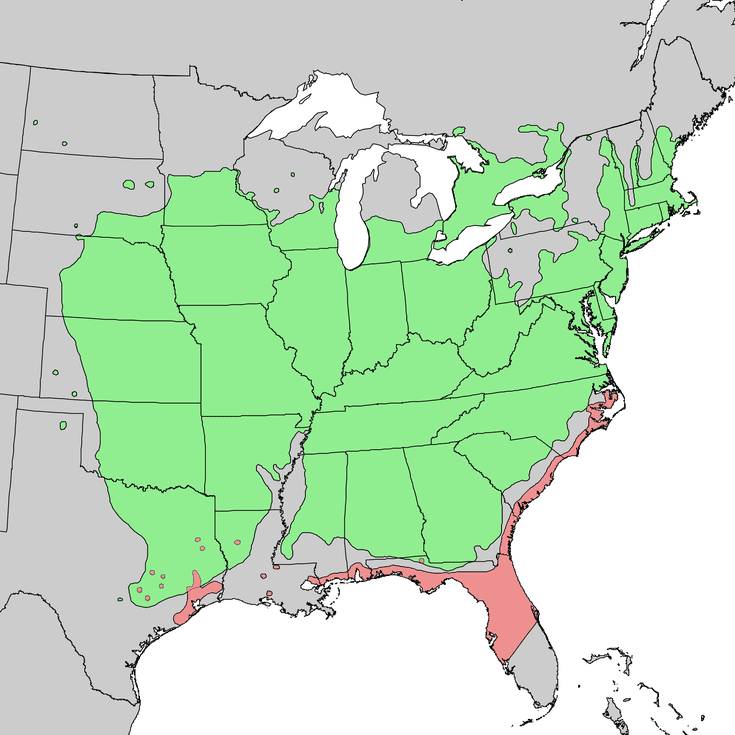 Natural distribution map for Juniperus virginiana var. virginiana (eastern redcedar) shown in green and Juniperus virginiana var. silicicola (southern redcedar) shown in red. (Elbert L. Little, Jr./U.S. Department of Agriculture, Forest Service/Wikimedia Commons)
Natural distribution map for Juniperus virginiana var. virginiana (eastern redcedar) shown in green and Juniperus virginiana var. silicicola (southern redcedar) shown in red. (Elbert L. Little, Jr./U.S. Department of Agriculture, Forest Service/Wikimedia Commons)
How to Get Rid of Red-Cedar Trees and Stop the Green Glacier
You can remove eastern red-cedar trees using one of three methods:
- Fire: Under safe conditions, prescribed burning effectively removes eastern red-cedars under 6 feet tall. However, it does not work as well for larger cedars, making this approach feasible only for new and younger trees. Controlled fires also create the risk of thrown embers that could endanger the area.
- Chemical: You can use a variety of liquid and pellet herbicides to kill red-cedars by applying them to the area of the tree that the package specifies. Depending on the brand, an herbicide may only work for red-cedar trees under 15 feet tall. Chemical treatments can also put surrounding plants at risk, so they work best when you know they will only affect red-cedars.
- Mechanical: If you have the right equipment, mechanical red-cedar removal can deliver the best results out of these three options. Heavy equipment such as a skid-steer can eliminate the intensive labor required with hand tools while increasing your removal power.
Mechanical Removal With an Attachment: The Commonsense Choice
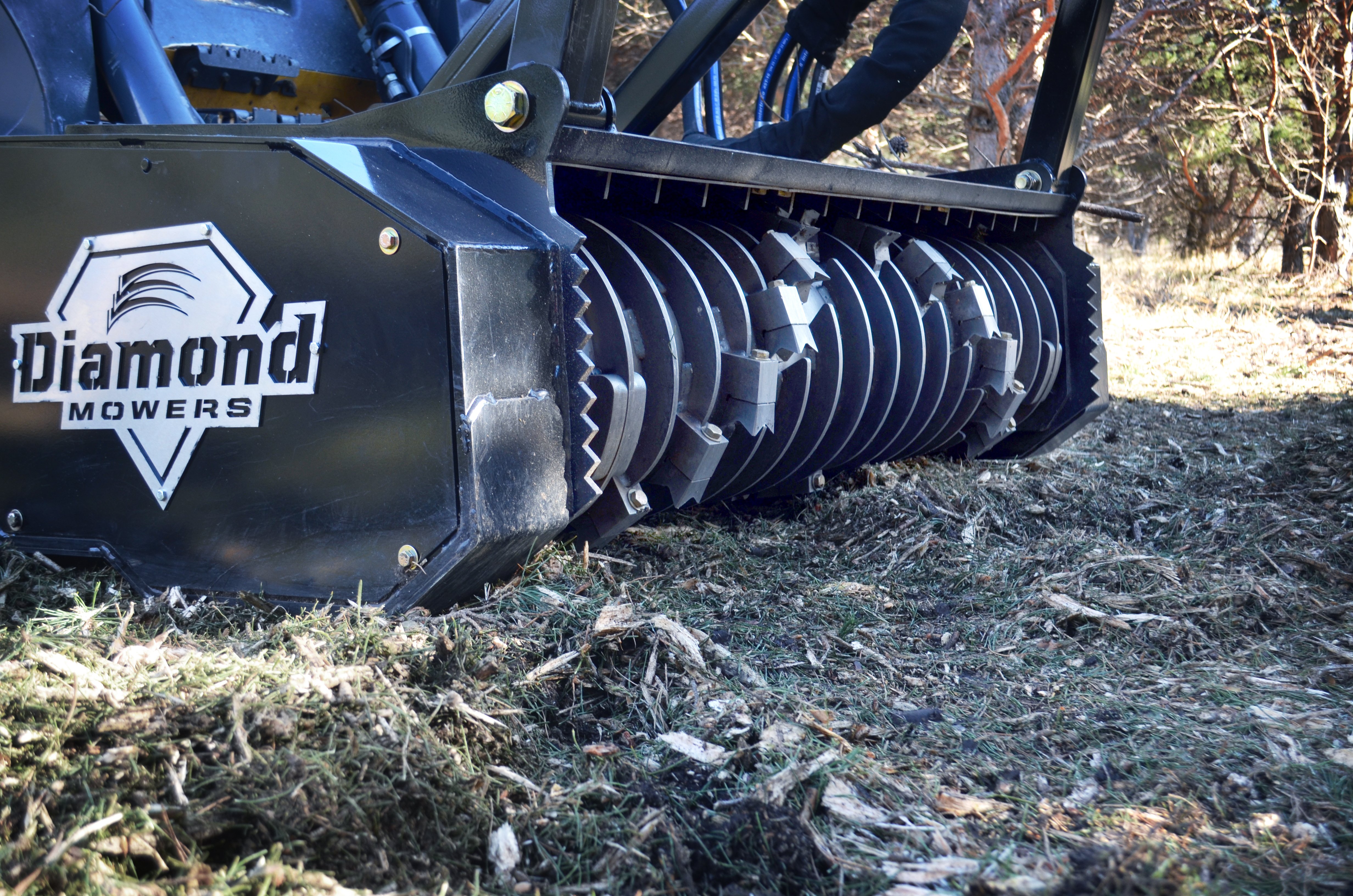
We recommend mechanical removal over chemical or fire methods for landowners who have heavy equipment like a skid-steer.
Skid-steers, excavators, tractors, and other machines that use attachments can effectively get rid of eastern red-cedars.
The tree removal attachments available for your equipment will depend on the type of machine you have, so pay careful attention to attachment product descriptions.
Try using one of these attachments to remove eastern red-cedars:
- Mulching attachments: Available for machines like tractors, excavators, and skid-steers, mulching attachments cut trees and process them into mulch. Common mulching head shapes for these attachments include discs and drums. Some mulching attachments can also cut red-cedars or grind their stumps. After mulching, consider chemically treating the remaining debris to prevent any seeds from sprouting.
- Stump grinders: Depending on the attachments you have, you may need a separate stump grinder to process the stump after removing the rest of the red-cedar. By getting rid of the stump, you can prevent a red-cedar from re-sprouting.
Land Clearing Attachments from Diamond Mowers
If you are looking to completely clear red cedar trees from your land, mulching attachments are the best choice for processing trees into a fine mulch. Diamond Mowers offers many great attachments for skid steers, tractors and excavators for mulching trees to help you get rid of red cedar trees.
Learn more by contacting our attachment experts or finding a dealer near you.
